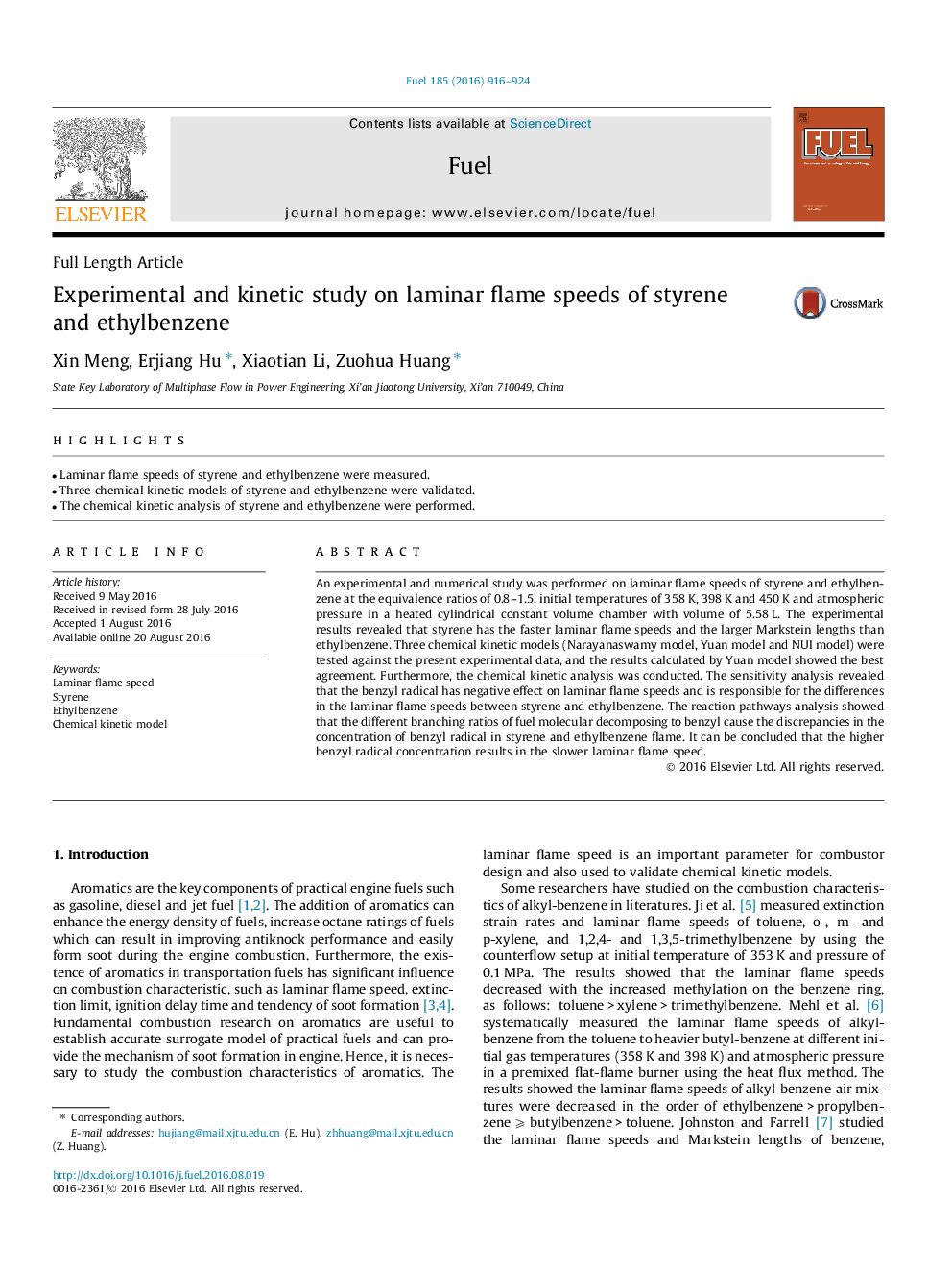| Article ID | Journal | Published Year | Pages | File Type |
|---|---|---|---|---|
| 6632912 | Fuel | 2016 | 9 Pages |
Abstract
An experimental and numerical study was performed on laminar flame speeds of styrene and ethylbenzene at the equivalence ratios of 0.8-1.5, initial temperatures of 358Â K, 398Â K and 450Â K and atmospheric pressure in a heated cylindrical constant volume chamber with volume of 5.58Â L. The experimental results revealed that styrene has the faster laminar flame speeds and the larger Markstein lengths than ethylbenzene. Three chemical kinetic models (Narayanaswamy model, Yuan model and NUI model) were tested against the present experimental data, and the results calculated by Yuan model showed the best agreement. Furthermore, the chemical kinetic analysis was conducted. The sensitivity analysis revealed that the benzyl radical has negative effect on laminar flame speeds and is responsible for the differences in the laminar flame speeds between styrene and ethylbenzene. The reaction pathways analysis showed that the different branching ratios of fuel molecular decomposing to benzyl cause the discrepancies in the concentration of benzyl radical in styrene and ethylbenzene flame. It can be concluded that the higher benzyl radical concentration results in the slower laminar flame speed.
Related Topics
Physical Sciences and Engineering
Chemical Engineering
Chemical Engineering (General)
Authors
Xin Meng, Erjiang Hu, Xiaotian Li, Zuohua Huang,
